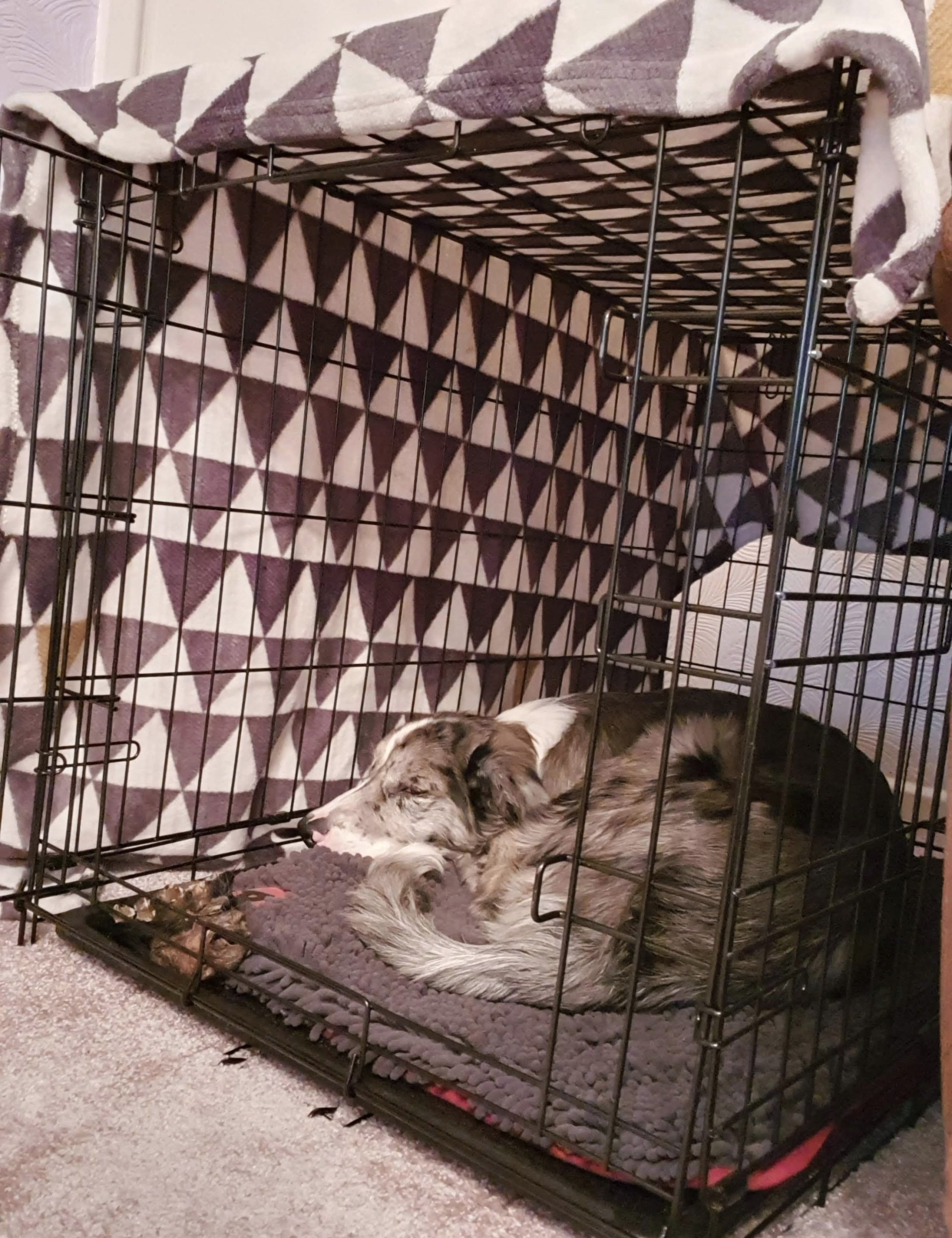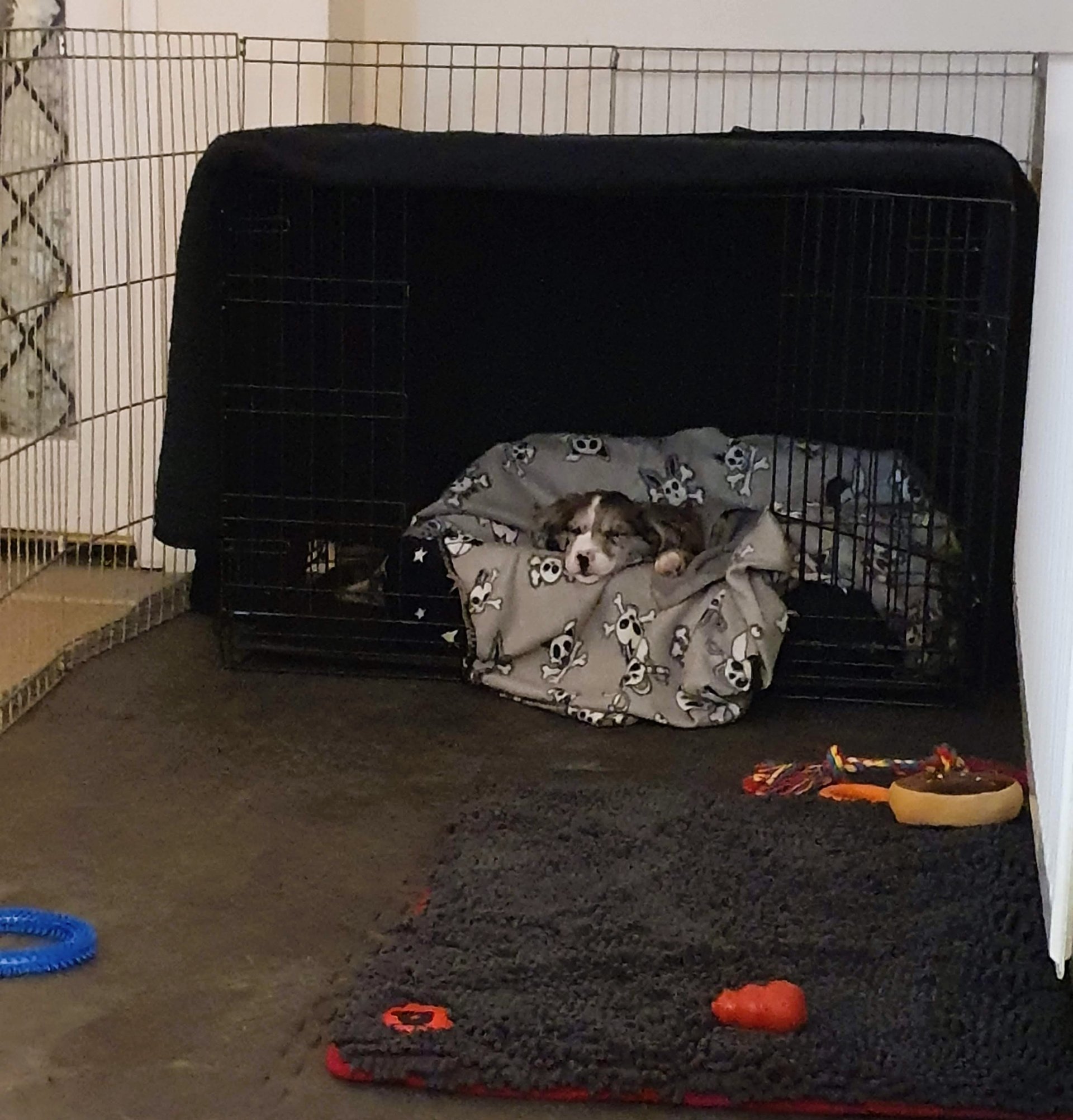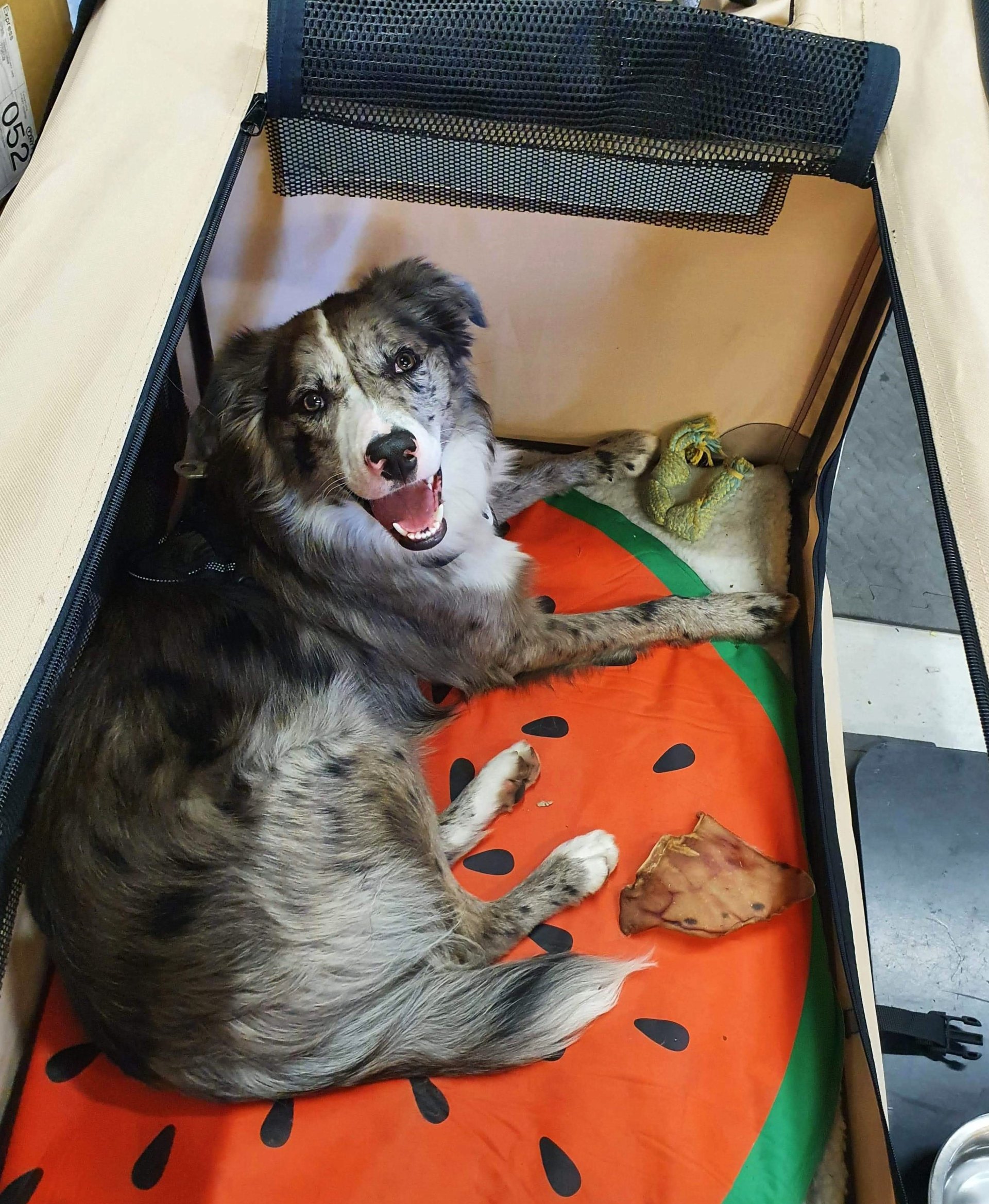FAQs about Crate Training a Dog or Puppy
Crate training is a little like Marmite. There are arguments for and against, but no matter which side you’re on, if you’ve got questions on crate training, we’re ready to dive in!
There may be several reasons you’re looking into crate training, you may have picked up a new pup, your dog may be recovering from surgery, or you may want to get them used to a crate for travel or a visit to the vet.
To ensure we’ve touched on the most commonly asked questions, we got in touch with professional Dog Trainer and Behaviour Practitioner, Ali Kirk from Kirk’s Canine Academy to discuss all things crate training.
How to get your home ready for your new pet
What is crate training?
Simply put, crate training is a way to get your dog used to being comfortable in a crate. If someone refers to their dog as crate-trained, it typically means they are used to spending time in a crate.

Why Crate Train a Dog?
Crate training can be useful for many reasons because, “it’s almost certain that in day-to-day life whether that’s in the car, down at the vet, if you’re travelling anywhere on a ferry or something like that, the chances are your dog is going to need to be in a crate and be happy settling in there and chilling out. That’s going to be a useful life skill,” explains Ali.
Some dogs retreat to crates for some peace, others as a safe space. Other dogs will only tolerate being kept in one for a while. But it’s great to know they will be comfortable being in one for times you may need to use them.
Are there other options besides crates?
If you have the space, pens are a great option. One of the Forever Puppy team used a crate and pen combo for her pup when he was younger.
“We were lucky enough to have the space to do this, but we opted to crate train for his safety and any time we were unable to supervise. We made sure the crate was suitable for his size and left a few toys and some water in the pen to make it a comfortable, fun space.

Our pup was never left for more than a few hours at a time, and we found after a while we could unlock the crate during the night once he got older and toilet training progressed. When he was around nine months we felt confident enough to remove both. We still use a crate for travel and when we’re visiting places, but our dog now sleeps in his bed or on the sofa at night. It works for him and us. You’ve got to do what works for you.”
Some people opt not to use anything at all, but this isn’t for everyone. For this to work someone would need to be around most of the time, especially with a young pup or injured dog.
You can also choose to use dog/baby gates and puppy-proof a room or certain area of your home to create a safe space to leave your dog when you are not home or unable to supervise.
When should I start crate training?
If you’ve just picked up a new puppy, training can begin straight away. When choosing a crate make sure you pick one that has enough space for your dog to stand, turn and stretch. If your puppy is quite small, certain crates come with dividers that allow you to create a smaller space that can be extended as they grow.
Start training your puppy or dog straight away and build up over time.
How to settle a puppy into a new home
How to Crate Train a Dog?
There are a few methods, but the main thing to remember is that a crate must have positive associations for your pup. It is never a place of punishment. It’s a place to rest, relax and be safe. It’s also important not to rush into things or force your dog, especially if they are young or particularly nervous.
When training, Ali suggests doing things in steps, “I’d recommend what I call a forbidden paradise. You start by shutting the door, putting loads of treats in and building up the pup’s desire to go into the crate. Open the door and leave it open so they can come and go as they like to get used to it. Make it a nice safe space and get them going in there happily and naturally then start shutting the door and gradually building up to get them used to it over time.”
Remember to let your dog go to the toilet before going in the crate. It’s also good practice to let them go out as soon as they are let out. Making sure all their needs are met before they are crated should help them settle.
Top Tip:
You can use a kong or licky mat as part of training. Licking is soothing and it will help pup associate the crate with high-value treats.
How long does it take to crate train a dog?
It is really difficult to give a definite answer. It can take a few days or for some, a few weeks. Various factors have an impact on how long the training takes. Things like your dog’s age and temperament will make a difference.
Some dogs enjoy being in a crate, others take time to warm up. Never force a dog into a crate. It’s ideally somewhere that they will associate with being a comfortable, safe place that they enjoy being in.
Tips for crate training:
-
Never leave your puppy/dog in a crate for too long. If they are unattended for more than a few hours, arrange for someone to come in and let them out for a toilet break and some playtime or training.
-
If your pup isn’t settling you can try putting the crate in different areas to see if it makes a difference.
-
It’s recommended that you remove collars before crating as there’s always a risk they may get caught.
Positive Puppy Training Guide
Benefits of Crate Training?
Crate training can be useful for training, rest and getting your dog to settle. But this doesn’t come until they are comfortable and happy with being in a crate of their own volition.

Here are some of the top benefits of crate training:
-
It can be a useful training tool for toilet training. Pups will rarely go to the toilet where they sleep.
-
They prevent pup from getting into any mischief or risk of injury when home alone.
-
They are great for allowing an injured dog to rest without risking further injury or harm.
-
They can be used to help recovery following surgery.
-
Is useful for travelling, vet visits, boarding, being at the groomers etc.
-
It can prevent destructive behaviours, your home will be safe and it means your puppy won’t destroy or ingest something they aren’t supposed to.
When can I stop using a crate for my dog?
This will depend on your dog, their training and how well they tolerate a crate. If you only want to use a crate for a limited time such as during recovery or whilst pup grows up that’s up to you!
Some will opt to permanently have a crate available for their dog, while others will remove it once they can trust their dog to be out of confinement without engaging in any unwanted behaviours when unsupervised.
However, we always recommend getting professional advice from your vet or a trainer if behavioural issues continue.
Have any more questions? Let us know! We also have a variety of other training guides and resources for you to check out with everything from toilet training to nutrition for pregnant dogs!